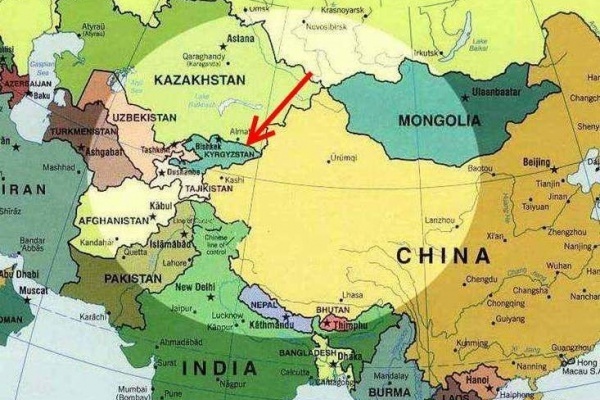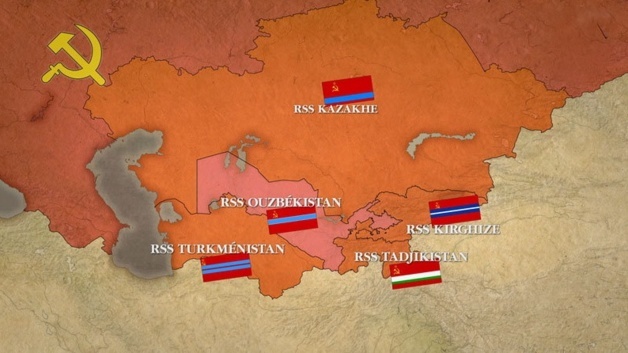
Since obtaining independence in 1991, the five Republics of Central Asia have shown to be resilient in the face of crises and threats.
By the end of 1993, only two years after the arrival of the five Central Asian states on the political world map, The Economist was predicting that the region would be one of the most unstable in the world in the upcoming decade. Although the evolution of the young independent states has not been a long quiet river, the dreaded dramatic instability or generalised chaos did not take place. The post Soviet era Central Asia has shown resistance when faced with crises and threats.
Historically a contact zone between empires and worlds (Eurasian Steppe, Persia, India, China, Russia and even the Greek world...) it remains so today. Nonetheless in spite of its diversity, Central Asia still has a ‘strong historical personality’ to which Xinjiang (or Eastern Turkestan, a territory populated by the Uighurs) has yet to be been added even if it is fully part of it.
The experiments of Russian colonization and seventy years of Sovietism have paradoxically contributed to rooting the Central Asian space in a similar and common reality while creating new identities and frontiers, or delineations, that have given its current shape to the region. The independences of 1991 have ratified the end of the Soviet Common Hall and the rupture of the ties between the different republics in a nationalistic one-upmanship that is still happening today.
If the region’s past and cultural heritage should serve as a hyphen but that even these data are the subject of nationalistic quarrels, ‘the present of Central Asia is always more marked by distance, as much on the level of the internal socio-political experiments at every republic as on the level of issues and geopolitical representations in an international context’. However, how can one still talk of a Central Asia ? How have the independences and globalization (for the moment) privileged the division of the Central Asian states rather than their integration ?
1991-2005, DIVERGENCIES AND POINTS IN COMMON : A RECIPROCATED EVOLUTION ?

Between 1992 and 1997, Tajikistan experienced a complex civil war with political, regionalist and ethnical outcomes. It is nevertheless the first division to occur and during this period, the only persianophone country of the region to have experienced an event that is both traumatising (20,000 to 100,000 deaths according to sources) and in interaction with the events of the south of Piandj, in Afghanistan. This deadly war and the fall of Kabul to the hands of the Taliban constitute not only a real fear but also an excuse for the hardening of all the regimes of the region in the wake of Uzbekistan (it must be said that the country has been the victim many times of deadly attacks between 1999 and 2004). According to a pattern that has already been seen in the Arab world, the authorities present themselves as the last defence against fanaticism by ways of which they then legitimize their political hardening. This internal hardening is doubled with an external hardening since the ultra safe discourse is reflecting also on intra regional relationships.
In this context the socio-political climate is, in addition to all the economic difficulties (in Tajikistan, 46% of the population lives below the line of absolute poverty and 34% of it in Kirghizstan) extremely heavy. The dissidents are forced into exile or killed, the syndicates or associations are almost systematically infiltrated by central power (except in Kirghizstan) and Muslims who are considered “too devoted” or are not in keeping with the official structures of Islam inherited from the Soviet Union are at the very least bullied and often imprisoned. Another common point between all these countries is the presence of corruption at all levels. High level corruption, that demonstrates that presidents and their families and/or their more or less extended clan and network have the monopoly over not only the positions of power but also the economic resources of the States (the families of both president Akaev and Bakyev in Kyrgyzstan, Karimov in Uzbekistan, Nazarbaev in Kazakhstan,etc). All of this being simply the revelation of a much deeper and wider phenomenon to which the latest classification of the Transparency International NGO can attest. Kyrgyzstan ranked 150th out of 177 evaluated countries, Tajikistan ranked 154th and Turmekistan and Uzbekistan ranked equal at 168th.
Although the trajectories of the different countries are far from being identical, this authoritarianism is a structuring fact of the regional political scene. Indeed this autocratic regime does not contribute to the improvement of cooperation and accentuates the growing differentiation (from nationalistic basis) between the different Central Asian states.





























